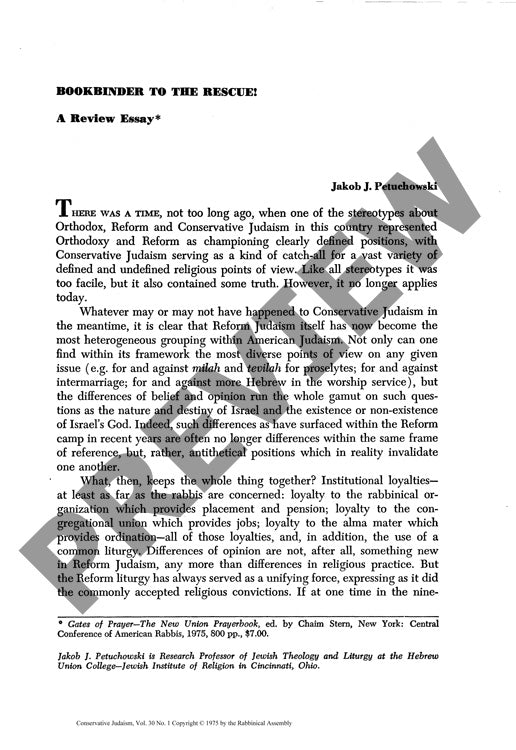Bookbinder to the Rescue a Review Essay
Couldn't load pickup availability
American Reform Judaism's fundamental unity fractured with the 1975 publication of *Gates of Prayer—The New Union Prayerbook*, a liturgical watershed that attempted to bridge deepening theological rifts through editorial innovation rather than shared conviction. Through detailed textual analysis of the prayerbook's 779 pages, including multiple service options for weekdays, Sabbaths, and festivals, distinct patterns emerge in its treatment of traditional liturgy and theological positioning. The prayerbook's most striking features include systematic conversion of direct divine address from second to third person, replacement of paternal imagery with gender-neutral language, and inconsistent incorporation of classical prayers previously omitted from Reform services. These structural and philosophical changes reflect a conscious departure from unified Reform worship toward heterogeneous religious expression, necessitating varied service options to accommodate increasingly diverse theological positions within the movement. While *Gates of Prayer* reintroduces many traditional liturgical elements, it ultimately represents the end of common worship among American Reform Jews, achieving superficial unity through editorial arrangement rather than shared religious principles. This liturgical fragmentation mirrors broader ideological divisions, transforming the Reform prayerbook from a source of communal cohesion into a collection of parallel services serving incompatible theological worldviews.

More Information
-
Physical Description
-
Publication Information
Published 1975
ISBN
-
Publication Credits
Jakob Petuchowski

